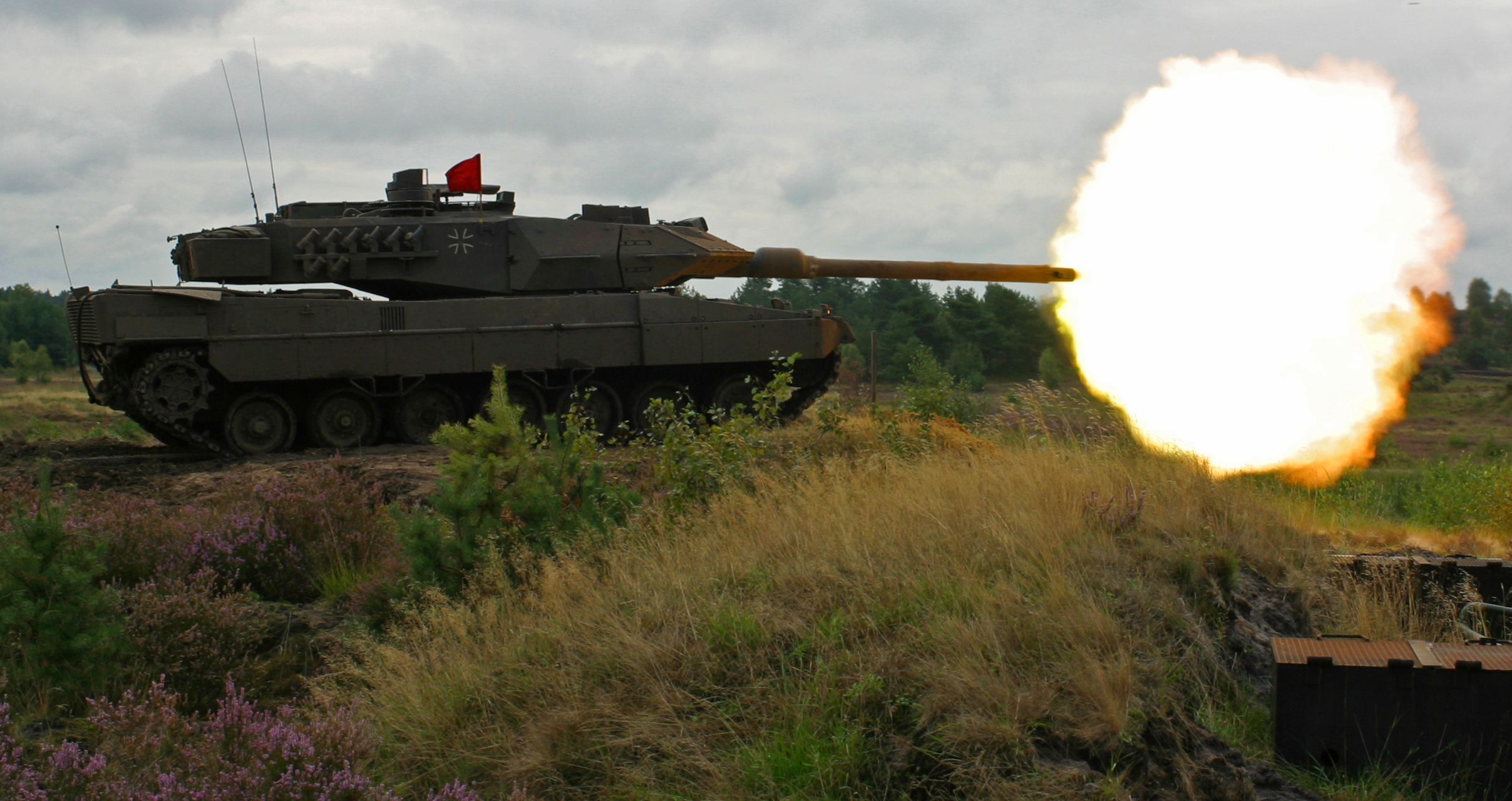 |
| http://upload.wikimedia.org/wikipedia/commons/4/44/Kampfpanzer_Leopard_2_A6.jpg |
The German Leopard 2 main battle
tank is hailed by many as the finest tank the world has ever seen. With
its 120mm, smoothbore cannon, reactive armor plating, and cruising speeds of
45mph over rough terrain, it is a $5.74million battlefield force to be reckoned
with (Military-Today, no date).
Guess who just ordered 62 of these
bad boys along with a complement of the world’s most advanced self-propelled
howitzers from Germany? None-other than the tiny nation of Qatar. The contract
was sealed April 18th and plans are in the works to round the final
purchase number to 200 of these tanks, worth $2.6billion (PressTV, 2013).
Michael Ross, as discussed in
class, explains three ways in which resource-rich autocratic countries maintain
control overt their populaces: citizen buyoff, financial secrecy, and “lavish”
military expenditures (Ross, 2011). Qatar certainly has the wealth to
accomplish all three of these aims, this particular example benefiting the
military. Qatar already ranks 3rd in the world for highest spender
of GDP on its military with an average of 10% GDP every year (CIA, 2013). An
advanced tank force such as this would command respect from the most developed
of world militaries, and strike fear into the hearts of underdeveloped would-be
adversaries.
So from what adversary does Qatar
anticipate hostilities requiring such an advanced tank force? In the MENA
region visited by the Arab Spring, does Qatar too face domestic threats?
With a per capita GDP of $102,800,
the highest in the world (CIA, 2013), the citizenry of the monarchic state are
usually considered contently docile as they themselves are bought off with tax
cuts and government handouts. The true inhabiting population of potential
dissidents comes from somewhere further from home: Southeast Asia. As described
in my last blog entry, Qatar is to play host to a future FIFA World Cup. This
will require the rapid creation of an enormous stadium, vast transportation
expansions, and overhauling of all the infrastructure in and around Doha in order
to not only accommodate the event, but to showcase the country’s “boundless”
wealth. This will require a massive influx of workers to join the already
swollen ranks (1.5 million, according to Blake Hounshell, 2012) of migrant
laborers, putting their numbers well above the current population of Qatar,
which sits around 2 million (CIA, 2013).
Qatar has not been known to treat
these workers with ample respect and fairness; The Sponsorship Law of the
country dictates that once a migrant worker arrives, they cannot do anything of
importance, not even leave Qatar again, without the express permission of their
Sponsor (Weingarten, 2011). This
veiled indentured servitude allows for the mistreatment and low pay given to
the current migrant workers. An influx of migrants would mean an outnumbered
Qatar population and the potential for some very overworked laborers that
wonder why their construction toiling for a better Qatar did really bear them
much fruit.
Qatar has bought off its citizens,
has already been known to lavish its military, and now has the ability to conduct
a technologically advanced ground war tank campaign. The only remaining
domestic threats are those of a foreign origin, and although they may have the
manpower, but they lack one key ingredient to posing a threat to their unfair masters : German tanks.
References:
Central Intelligence Agency, (2013). CIA World Factbook. Retrieved from
website:
https://www.cia.gov/library/publications/the-world-factbook/geos/qa.html
Hounshell,
B. (2012, June). The Qatar bubble. Foreign
Policy
Military-Today.
(n.d.). Leopard 2 main battle tank.
Retrieved from http://www.military-today.com/tanks/leopard_2.htm
PressTV. (2013,
April 23). Germany’s KMW to sell Leopard
2 tanks to Qatar. Retrieved from http://www.presstv.ir/detail/2013/04/23/299719/germanys-kmw-selling-tanks-to-qatar/
Ross,
M. L. (2011). Will oil drown the arab spring? democracy and the resource curse.
Foreign Affairs, 9(5), doi: FRNA000020110902e79100001
Weingarten,
E. (2011, March 25). Why qatar seems
immune from the arab world's revolutionary fever. The Slate Group.
Retrieved from http://www.slate.com/articles/news_and_politics/explainer/2011/03/were_not_gonna_protest.html
Another huge part of Qatari military spending which is linked to its stability (a la the Ross article) is the money it spends to pay upkeep on US military bases on Qatari soil. Qatar pays for upwards of 60% of the upkeep costs for these different bases, but in return it gets the implicit support of the US military in the event of conflict and an important diplomatic quasi-ally in the process! It is the only way that Qatar can maintain working relationships with both the US and Iran, both of which are important to its status as an important negotiator in the MENA region. This, in turn, provides not only a feeling of domestic security in the country (which might deter protest), but also protects Qatar's favorable international image, which also helps the regime appease its citizenry by being able to say, essentially, "look how awesome we are! We've got the World Cup!"
ReplyDelete